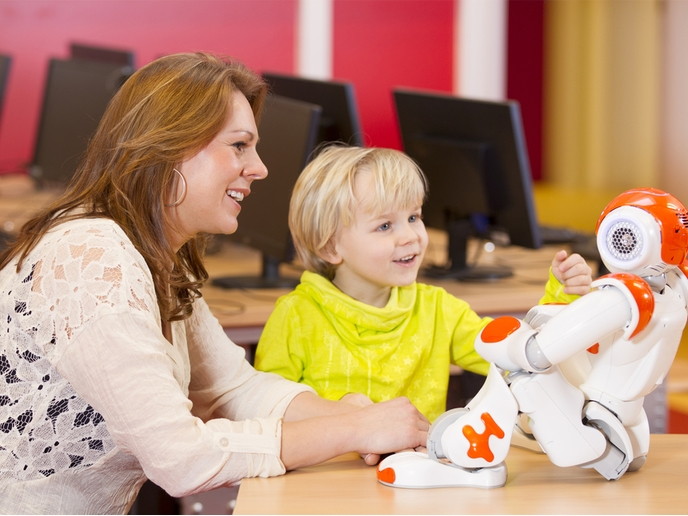Contactless technologies capable of recreating touch
The COVID-19 pandemic highlighted how deeply we rely on touch – not just for function, but for comfort, empathy and social bonding. “Current haptic technologies (like those found in game controllers to recreate motion or vibration) fall short,” says TOUCHLESS(opens in new window) project coordinator Sriram Subramanian from University College London(opens in new window) in the United Kingdom. “They often require wearables or contact surfaces and rarely consider the emotional power of touch. This misses what makes human connection truly meaningful.”
Making digital interactions more human
The EU-funded TOUCHLESS project set out to address this by developing the world’s first emotionally intelligent, touchless haptic platform – one that could deliver rich, contact-free tactile experiences across the body and adapt them to the user’s emotional and social context. “The goal wasn’t just to simulate sensation, but to evoke emotion, bringing digital interactions closer to real human experience,” explains Subramanian. To achieve this, the project brought together a cross-disciplinary team. First, novel hardware, including electrostatic arrays that trigger ‘goosebumps’, and ultrasonic fields for mid-air caresses, was developed. The project team next mapped how these stimuli were perceived, through psychophysical experiments across body regions. An AI platform combining real-time sensing (e.g. heart rate and gaze tracking) with adaptive haptic modulation was developed for this purpose. “We also built tools like Feellustrator(opens in new window) to design haptic experiences, and a standardised touch library(opens in new window) to catalogue affective stimuli,” adds Subramanian. “Real-world demonstrators were developed, including a vending machine with adaptive touch feedback, mindfulness experiences and automotive concepts.”
Responsible development of touchless technologies
TOUCHLESS produced a wide range of breakthroughs. “These included ‘goosebumps on demand’ using safe electrostatic stimulation on the forearm and nape,” notes Subramanian. “We showed how digital touch can feel truly affective.” The AI platform was also shown to be able to adapt touch in real time based on bio-signals such as heart rate and gaze, while tools such as Feellustrator made it easy to design and preview tactile effects. “We also created a robust ethical framework(opens in new window) – the first of its kind – to guide the responsible development of emotional, touchless technologies,” remarks Subramanian. Potential end users include healthcare providers, who could utilise touchless feedback for calming patients or enhancing telepresence. Education and training could also benefit from emotionally intelligent interactions in virtual classrooms or labs. “In entertainment and gaming, mid-air haptics could add an emotional layer that deepens immersion,” says Subramanian. “Even accessibility technologies could be transformed, giving people with sensory impairments new channels for expression and communication.”
Bringing new haptic technologies to market
TOUCHLESS is now moving from lab to market. “Some results are entering early-stage commercial testing,” adds Subramanian. “The Text-to-Haptics engine is being explored in creative media and accessibility contexts.” One unexpected outcome was the creation of AcoustoFab(opens in new window), a start-up applying ultrasound to precisely manipulate small particles and droplets. The technique was originally used in TOUCHLESS to deliver tiny chemical stimuli onto the skin – a concept known as chemical haptics. “We developed it to explore new kinds of sensory feedback,” explains Subramanian, “but quickly realised it could unlock entirely new industrial processes in fields like 3D printing, seed sorting and lab automation.” To inspire broader adoption, the team has produced a video(opens in new window) showing future use cases. “We hope TOUCHLESS leaves a lasting mark on how people experience technology – not just as useful, but as emotionally meaningful,” notes Orestis Georgiou, a project partner also from University College London.







